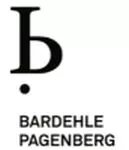- in Africa
1. Key takeaways
Indications of purpose in a device claim
1. Indications of purpose in a device claim regularly define a device in such a way that it must be suitable for use for the function and purpose specified in the patent claim.
2. If a device claim contains an indication of purpose, the only factor relevant for the novelty examination pursuant to Art. 54 EPC is whether a device already disclosed in the prior art comprises all the spatial and physical features required by the patent for the device. The only exception to this is if the device disclosed in the prior art is unsuitable for the intended use of the patent or requires modification in order to be used for that purpose.
Defense by means of auxiliary requests
3. If the patent proprietor defends the patent (as an auxiliary measure), in the event that the registered version of the patent is only partially invalid, solely in the version of auxiliary requests, there is no need to examine, in accordance with Art. 76(1) UPCA, whether the claims of the patent in the registered version are only partially invalid pursuant to Art. 65(3) UPCA.
4. If the patent contains several independent claims, an auxiliary defense of the patent by means of closed sets of claims means that the patent can only be maintained on the basis of such an auxiliary request in which each of the independent claims of the patent is comprised in a grantable version.
5. An amendment to the patent must satisfy the requirements of Art. 84 EPC. It must therefore be examined whether the amendment introduces a lack of clarity
Scope of exhaustion pursuant to Art. 29 UPCA
6. The lawful purchaser of a product placed on the market by the patent proprietor is, among other things, entitled to use that product for its intended purpose. In this respect, exhaustion has occurred in accordance with Art. 29 UPCA. Intended use also includes the usual maintenance and restoration of usability if the functionality or performance of the specific product is wholly or partially impaired or eliminated due to wear, damage, or other reasons. However, intended use does not include any measures that result in the reproduction of a product covered by the patent. The patent proprietor's exclusive right to manufacture is not exhausted when a copy of the patented product is placed on the market for the first time.
7. If a part of a patented product is replaced, the decisive factor in determining whether this constitutes use in accordance with the intended purpose or a new manufacture is whether the replacement preserves the identity of the specific patented product placed on the market or whether it creates a new product in accordance with the invention. This is assessed by weighing up the legitimate interests of the patent proprietor in the economic exploitation of the invention on the one hand and the interests of the purchaser in the unhindered use of the specific product placed on the market in accordance with the invention on the other, taking into account the unique nature of the patented product.
8. If the replacement of the part in question can normally be expected during the product's lifetime and if, as a result, the public or customers can reasonably expect to be able to continue using the purchased product or to use it multiple times by means of the replacement part, it can generally be assumed that the patented product placed on the market is being used in a legitimate manner. However, the situation is different in exceptional cases where the technical effects of the invention are reflected precisely in the replaced part.
Consequences of indirect patent infringement pursuant to Art. 26 UPCA
9. If an attacked embodiment that indirectly infringes the patent pursuant to Art. 26 UPCA can also be used without infringing the patent, only a limited prohibition is justified in principle, which ensures that, on the one hand, economic trade in the attacked object outside the scope of the property right remains unaffected and, on the other hand, the direct patent-infringing use by the customer is excluded with sufficient certainty. Warnings and/or contractual cease-and-desist agreements are generally considered suitable measures for this purpose.
10. 10Art. 64 UPCA (corrective measures) does not apply to indirect patent infringement pursuant to Art. 26 UPCA. Consequently, in particular, no patent infringement can be found.
- Division
LD Munich
- UPC number
UPC_CFI_248/2024
- Type of proceedings
Infringement proceedings
Counterclaim for Revocation
Application to Amend
- Parties
Claimant: Brita SE
Defendants: AQUASHIELD EUROPE s.r.o., AQUASHIELD DACH GmbH, Gasmarine BV Srl, MGR26 Société à responsabilité limitée
- Patent(s)
EP 2 387 547
- Body of legislation / Rules
Art. 26, 29, 64, 65, 76 UPCA, Art. 54, 84 EPC.
To view the full article please click here.
The content of this article is intended to provide a general guide to the subject matter. Specialist advice should be sought about your specific circumstances.


